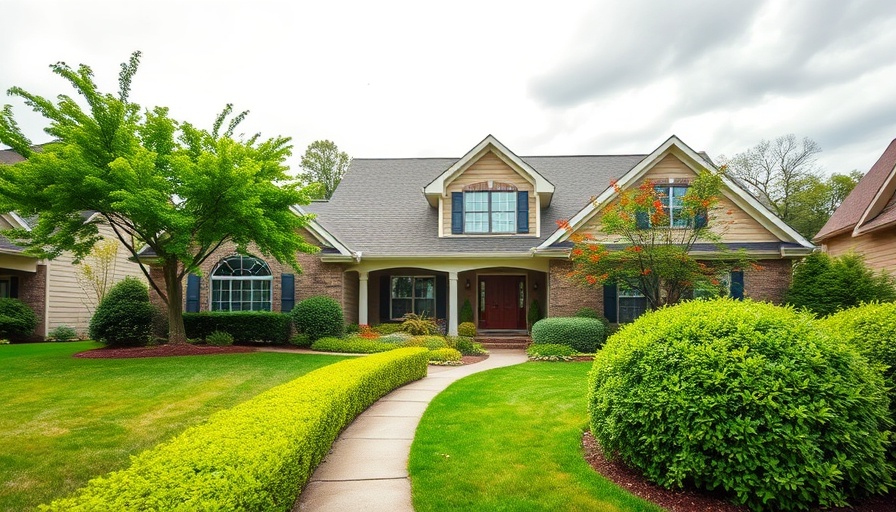
The First Impression Matters: What is Curb Appeal?
Curb appeal is more than just a trendy term in real estate—it refers to the initial visual impact your home makes from the street. This includes everything visible from the lawn and landscaping to the color of your front door. Essentially, curb appeal is about creating an inviting first impression that can influence potential buyers before they even step inside.
Why Curb Appeal is Crucial in Selling a Home
For homeowners looking to sell, understanding the importance of curb appeal is vital. According to real estate surveys, an overwhelming 99% of realtors agree that curb appeal significantly attracts potential buyers. A well-maintained exterior suggests to buyers that the property has been well cared for, instilling confidence even before they cross the threshold. In contrast, a neglected exterior could lead buyers to assume the home is in disrepair inside as well, regardless of what they might find once they enter.
Financial Upsides: The Value of Curb Appeal
Improving curb appeal isn’t just about aesthetics; it has tangible financial implications. Investments made in enhancing curb appeal can yield an impressive return on investment—up to 238%, as stated by real estate professionals. This means simple improvements like fresh paint, colorful flowers, and good lighting not only beautify your home but can often lead to higher offers and quicker sales.
Effective Strategies to Boost Curb Appeal
So how can homeowners effectively enhance their property’s curb appeal? Start by taking a step back and viewing your home from the street. Identify areas that stand out positively and negatively. High-impact areas such as:
- Front Doors: A freshly painted door can be a striking focal point.
- Landscaping: Well-maintained plants and greenery create visual interest and warmth.
- Walkways: Clean and accessible pathways ensure that potential buyers feel welcomed.
Simplifying the landscaping can also be an effective strategy—adding flowering plants or maintaining grass can revitalize the appearance of your home.
A Neighborly Approach: Community Insight
Curb appeal not only affects individual homes but also influences the overall feel of a neighborhood. Homes that look attractive can raise property values across the community, a crucial aspect for sellers seeking to maximize their real estate value. Communities with high curb appeal often foster a sense of pride among residents, encouraging everyone to maintain their properties.
What Makes the Most Impact?
Homeowners should prioritize their improvement efforts based on visibility and impact. Simple, cost-effective upgrades can range from changing light fixtures to adding attractive address numbers. The focus should always lie in making buyers feel that they are stepping into a welcoming space.
Actionable Steps for Sellers
To capitalize on curb appeal, sellers should assess their homes through a buyer’s eyes, actively considering how to enhance each aspect. Simple action items include:
- Power wash driveways and sidewalks.
- Trim overgrown bushes and trees.
- Install outdoor lighting fixtures to showcase your home at night.
These small steps can lead to substantial benefits, making your property more appealing and marketable.
Conclusion: Elevating Your Home's Entryway
Incorporating improvements to your home’s curb appeal is not just a decorative endeavor; it’s an essential part of the selling process that can have significant implications for success in the competitive real estate market. Begin assessing and enhancing your home now to ensure it stands out in the sea of homes for sale. From fresh flower beds to a meticulously kept lawn, investing time in curb appeal can yield admirable returns in both monetary value and buyer interest.
 Add Row
Add Row  Add
Add 



Write A Comment